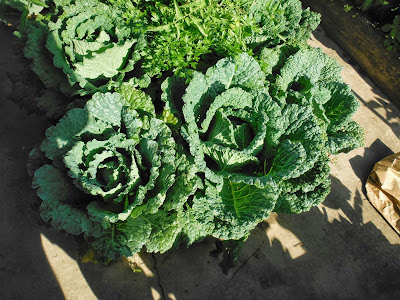Introducing our leadership for pilot YTI 2013Joe MullenArtist, college professor, builder and river guide
 Chief Treebeard
Chief TreebeardA medicine chief of the Big Horn Lenape Band, David Chamberlain is also an author, a builder and gardener, and a father of three sons.

At first, when I entered into working with Project Grow, I was wondering how it would all work out. I knew it would, I just didn't know how. Without a solid land base, our own kitchen, etc. everything went smoothly. I really enjoyed cooking for everyone, and in the process I learned how to make decent pizza. Even though at times I had some things to teach, I also learned much and gained some new experience. Had clams cooked on pine needles, learned of berm & swale gardening. It was fun working with the young people. They were a good group, and I enjoyed their youthful exuberance. Working with these young people gave me hope for the future. If they listened to one thing in our many philosophical discussions, we succeeded with them; I hope they remain open-minded, and continue to consider & to think outside the box.
Destiny was great at co-coordinating everything, Joe, great at cementing order and starting dialogue, and showing even me a few new things. It was a pleasure, to serve and to share my knowledge.
Memories: Di going to make mozzarella & finding she had the wrong milk; Caleb playing the bongos; the chattering and giggling of young women/ remembering my youth at that age; the many demonstrations given by Joe; the bat in the kitchen as I was trying to make bread; Destiny, keeping everything together & so many things happening at once, in different directions; the beauty of the Miller Estate; meeting new people.
Wawoolamulsee! Tree Beard
Destiny KinalCo-founder of Reinhabitory Institute, with Judith Thomas, and co-founder of Project GROW, with RI's principals and the core committee of Project GROW in 2011.
Doing this--working with kids to engage them in their local watershed, its history and character--has been an ongoing dream of mine since our first bi-county team with Carantouan Greenway 15 years ago, building the Forbidden Path. Teachers of theirs at the time noted that the summer had been transformative for the students. In Buffalo, at a similar but urban Mass Ave Project, students graduated from high school at a 90+% rate against a background for Buffalo of 24%. I have always regretted that we didn't track our kids to see how they turned out as adults.
With Youth Training Initiative, we intend to stay in touch with our pilot group of six kids, and use them next year to seed into a new group of kids, our senior mentors.
Rose Lerche (Larkie)Rose lives her life in service. When Destiny discovered that a family commitment would keep her out for the first two weeks of the program, Rose stepped up. Rose laid down the pattern of recordkeeping that would make Destiny's stepping back in crystal clear: attendance, work in the journals, the log of days, harvesting, lunch preparation and eating...all were set for both students and directors by the miraculous Rose.















